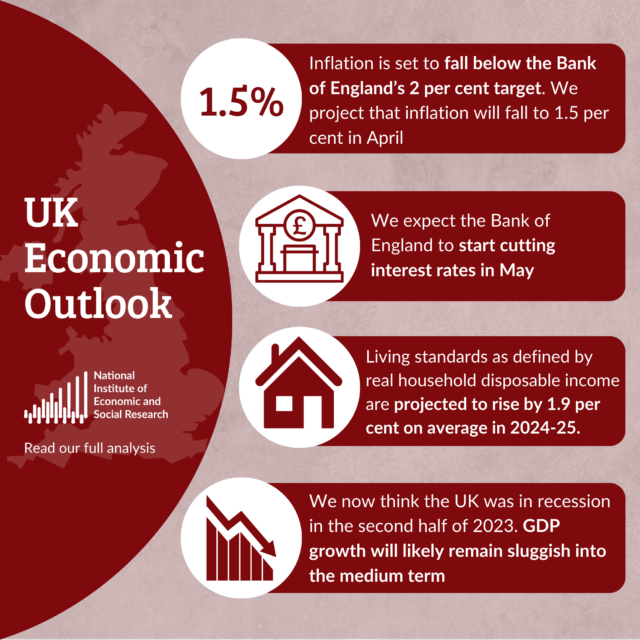What’s Happening to Levelling Up?
With doubts over the future of HS2, where are we on Levelling Up? Our Deputy Director Prof Adrian Pabst spoke with Prof Arnab Bhattacharjee about regional disparities and policy options.

What progress has been achieved to date?
The UK has some of the highest regional inequalities among the 38 OECD countries, notably in terms of GDP and productivity. Inequalities are high not only between London and the metropolitan parts of the South-East and the rest of the country, but also within regions – between cities, on the one hand, and suburban, rural and coastal areas, on the other hand, as well as within different areas such as London itself which has some of the greatest wealth and some of the worst poverty. Part of the problem is that London’s performance skews the picture, which is why we tend to use median GDP and real wages rather than averages in our quarterly economic outlook for the devolved nations and English regions.
In our latest forecast published in August 2023, we found that some disparities are growing, notably between London and the West Midlands where real wages in 2024 are projected to be down by about 5 per cent compared with 2019 and productivity is set to fall too. With anaemic economic growth and flatlining productivity at the aggregate level, there is little catching up we can observe, though that is the explicit goal in the Levelling Up White Paper of February 2022 – a narrowing of the gap between growth, wages and productivity between the top performing and the worst performing areas of the UK. While there are some positive developments such as employment levels in Scotland and growth in parts of the North-West, the underlying dynamic of increasing inequalities has so far not changed.
What do you make of the latest government announcements?
After the interlude of the Liz Truss government when belief in trickle-down wealth trumped other economic considerations, the Sunak government’s commitment to Levelling Up is an important signal, as is the opposition Labour Party’s pledges in this key area of public policy. We know that the success of economic policymaking depends to some considerable extent on the existence of a broad cross-party consensus, together with long term commitments spanning several terms of the Parliament. The same is true, for example, with central bank operational independence, the introduction of the minimum wage or the creation of the OBR. Here it is worth mentioning that the devolved governments of Wales and Scotland have made an important contribution to UK debates by emphasising the importance of longer-term thinking and ten-year economic strategies aimed at regenerating some of the most economically and socially deprived areas.
The government’s latest announcement of long-term plans to support towns is a step in the right direction, including greater powers for towns and a dedicated fund with about £20 million endowment for each town. NIESR has consistently argued that agglomeration effects, while significant for cities and clusters, do not generate sufficient positive spillover effects for adjacent areas such as towns or suburban, rural or coastal areas. Such positive externalities are even less evident for peripheral areas, for example the Highlands and Islands in Scotland, and less industrialised rural areas of Northern Ireland and Wales. Moreover, some spillover effects from cities are negative in terms of young people leaving towns or turning towns into commuter belts and similar phenomena. Yet we also need investment at-scale and a plan for devolution beyond trailer blazer deals for city-regions.
What alternate policies are necessary?
The need for alternate policies is less urgent than consistent and evidence-based policymaking, both of which are deficient at the moment. The government is looking at a range of policy tools or levers (“means”), targeting multiple measures potentially aligned to a range of capital or infrastructure concepts (“ends”). The framework is well laid down in the Levelling Up White Paper, together with variations and enhancements proposed by the devolved governments and some city-regions.
Notwithstanding some overlap between “means and ends”, and no clear sense that the well-known ‘Tinbergen principle’ is respected, this is a very good place to start. It shows ambition and vision, and a concern for the wellbeing of future generations. This is because the Tinbergen principle states that there should be an alignment between policy targets and policy tools, in the sense that if you have too many targets and comparatively few levers, it makes both checking progress and meeting targets challenging.
However, two concerns remain. First, there is substantial policy uncertainty, and this mitigates against the potential to meet targets. Forces of agglomeration are very strong and persistent, supporting sustained advantages to London and metropolitan parts of the South-East in particular and entrenched disparities within and between regions. Then, catching up or regional regeneration is a very long-term objective spanning generations, requiring sustained efforts over half a century or more to try and achieve tangible results. However, the continuous churn in policy enhances uncertainty rather than reducing it.
For example, the high profile HS2 project has seen continuous chip and change over its entire, rocky journey so far. This does not provide adequate certainty for businesses and households to plan adequately for the future in which as a country we can narrow the gap between some of the top performing and worst performing areas.
Second, there is lack of evidence base behind levelling up policy, and certainly lack of transparency regarding any such evidence. In the case of HS2 expansion, there are several such unanswered questions.
What were the anticipated benefits from HS2 expansion in its various forms, to Leeds and to Manchester, for example? How much of these benefits would accrue to local communities and where, and how much through agglomeration effects to London and the south? In what time scale? What are the cost and benefit calculations underlying policy and its changes?
Unfortunately, capital projects in the UK tend to involve substantial cost and time overruns. How much overruns were anticipated, and what risk mitigation was put in place? Were current estimates of cost overrun substantially higher? By how much? What is the evidence base regarding all such considerations? We need clear answers if infrastructure investment decisions are to be made for the benefit of local and regional regeneration.
Unfortunately, we have no clear answers, and this is not helpful.






















